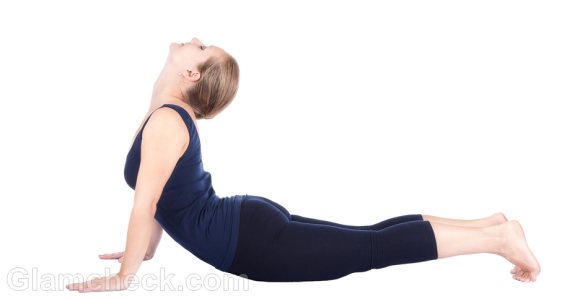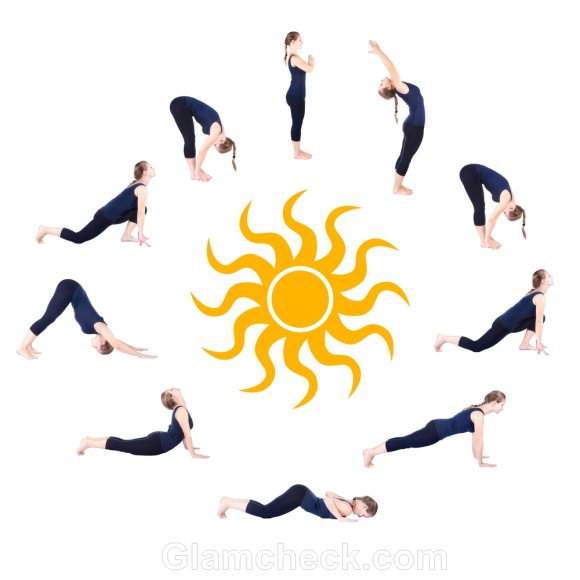One of the most ancient techniques of body and mind control, Yoga, comes to the rescue even today. Yoga is widely practiced around the world for it many health benefits that include relief from simple tension and stress to healing the body’s more serious ailments such as kidney malfunction and uterine problems. Yoga when practiced on a regular basis, refreshes the body and rejuvenates the mind.
 Headaches may be the result of certain problems in the body and are purely symptomatic of such ailments, and sometimes, they need not necessarily be associated with problems in the body and may be caused due to certain extraneous triggers and inducers. Yoga has the ability to treat most cases of headaches, ranging from anxiety and stress headaches to more serious migraines and cluster headaches.
Headaches may be the result of certain problems in the body and are purely symptomatic of such ailments, and sometimes, they need not necessarily be associated with problems in the body and may be caused due to certain extraneous triggers and inducers. Yoga has the ability to treat most cases of headaches, ranging from anxiety and stress headaches to more serious migraines and cluster headaches.
Types and Causes of Headaches
Headaches can be Episodic or Chronic, depending upon the frequency of the pain attacks. When the headache bouts occur for less that fifteen days a month, it is said to be episodic and when the number of pain days exceeds fifteen, the headache problem is said to be chronic.
Whether episodic or chronic, headaches can cause a great amount of disruption to the everyday activities of a person, in addition to the bodily pain and irritation caused. Some of the most common types of headaches include the tension type headaches, migraine headaches and the sinus headaches.
The most common causes of headaches include:
- Physical and Emotional Stress
- Excessive anxiety and depression
- Tension
- Sleep deprivation or altered patterns of sleep and waking
- Irregular food habits
Some headaches are secondary in nature, in the sense, they do not present themselves in isolation but are rather manifestations of certain disorders and ailments of the body. Some of the underlying disease conditions that give rise to headaches are:
- Intra cranial injury and bleeding
- Intra cranial injury that does not bleed, such as contusions
- Brain tumor and cancerous growth of brain cells
- Infections such as meningitis, encephalitis and HIV
It is possible to avoid or prevent some forms of headaches and Yoga can play an immense role in strengthening the body and boost its immunity to act as a potent shield against such disruptions.
Getting Started – Posture Corrections
Practice of yoga requires patience and dedicated time to master the skills and techniques involved. Before going in to the specifics of the asanas, the general practice of yoga corrects issues of bad posture. Bad postures can be real irritants, especially the long hours spent at the office desk, and can lead to tension and stress in the back as well as the upper neck region that eventually culminates in the development of a bad headache.
Some of the specific asanas that help in posture correction are the Vajrasana, Sukhasana and the Tadasana.
- The Sukhasana or the cross legged sitting pose, helps to align the head, neck and the spine in a straight line. The legs are crossed in such a manner where the heels are placed right below your groin and the knees are folded in a manner to produce the necessary tension in the hip area to keep the upper body upright.
- The Vajrasana, also known as the diamond pose, is another simple asana to help improve head, neck, spine alignment. The main benefits of this pose is to improve digestion and related functioning, but improved posture is the most important spin off benefit in this asana.
- The Tadasana is a simple, but extremely potent asana for increasing height as well as improved posture.
Posture corrections can go a long way in preventing several possible headache attacks, especially, during and after office hours.
Working on the Neck and the Head
Neck exercises help relieve the tension in the upper neck region which, in most cases, leads to tension type headaches. Exercising the neck improves flexibility and relaxes the muscles.
The Bhujangasana
 Also known as the Cobra Posture, the Bhujangasana mainly aims at improving flexibility and provides the much needed stretching of the neck and back region. In this asana, the head and the neck are bent backwards following which the upper body is raised to flow with the motion. While bending backwards, the focus should be on slowly inhaling and exhale while returning to normal.
Also known as the Cobra Posture, the Bhujangasana mainly aims at improving flexibility and provides the much needed stretching of the neck and back region. In this asana, the head and the neck are bent backwards following which the upper body is raised to flow with the motion. While bending backwards, the focus should be on slowly inhaling and exhale while returning to normal.
The Bhujangasana energizes areas that are readily affected by headache bouts such as the head, the upper neck as well as the temple region and the forehead. The spinal as well as the cranial nerves are rejuvenated and the supply of blood to the head and neck region is improved. When blood supply improves in the region of the head, the possibility of getting a headache is greatly reduced.
One Stop Solution – The Suryanamaskar
 The Suryanamaskar is a sequence of postures and salutations in honor of the ‘Sun God’. The Suryanamaskar has several health benefits and it is highly recommended to make Suryanamaskar a part of your daily routine. The Suryanamaskar is capable of healing ailments of the liver, kidneys, indigestion and weight issues.
The Suryanamaskar is a sequence of postures and salutations in honor of the ‘Sun God’. The Suryanamaskar has several health benefits and it is highly recommended to make Suryanamaskar a part of your daily routine. The Suryanamaskar is capable of healing ailments of the liver, kidneys, indigestion and weight issues.
The Suryanamaskar activates the entire nervous system and energizes the nerves as well as the muscle. When the nervous and the muscular systems are relieved of the tension and rigidity, the blood flow around the cranium is eased and the blood vessels are relaxed, leading to easing of headaches and neck pain.
The sequence is made of of twelve postures to be performed as a continuous piece giving emphasis to the breathing pattern while the poses are performed. It is best to perform the Suryanamaskar early in the morning, but it can be performed at any time of the day, provided it is not done soon after having meals. Before doing any Yoga asana it is important that the stomach is kept relatively empty to avoid any discomfort.
The Bhujangasana, Hasta Uttanasana and the Ashwa Sanchalanasana in the sequence help to relieve the pressure and stress in the neck as well as the back region. The sequence should be repeated at least four times and should be practiced regularly for visible effects.
Shirsasana for Migraines
The ‘Headstand’ posture is something that is difficult to master in the absence of patience and practice. The Shirsasana is particularly effective in treating fatigue, tension and headaches, especially migraines. This asana is effective in stimulating the endocrine organs and is effective in aligning the spine to the correct position.
Before starting out with the Shirasasana, it is recommended to master certain basic poses such as the Dhanurasana, Ugraasana and the Sarvangasana. It is recommended that menstruating women stay away from this asana and perform this after their menses are over.
Other poses that are effective in treating migraines are the Vrikshasana or the ‘Tree pose’, the Naukasana or the ‘Boat pose’, Tadasana, the Dhanurasana or the ‘Bow pose’ and the Sarvanagasana or the ‘Shoulder stand’.
Pranayama
The Kapalbhati is one of the most famous techniques of Pranayama. This exercise is essentially to rectify the obstructions in the ‘Kapal’ or the skull. This type of Pranayam involves soft, slow inhalations accompanied by vigorous exhalations. The nerves are put to test here and the cells are rejuvenated. This process has a cleansing effect on all organs and systems of the body and help clear out any blockages in the head region.
Yoga not only improves physical fitness and tenacity, it also has an impact on the person’s mental health and fitness as well. When the mind stays calm and is free of unnecessary tension, a huge burden is lifted from the system there is a free flow of energy and the possibility of headaches are greatly reduced. Yoga, can thus be both prophylactic as well as therapeutic when it comes to dealing with headaches.
Image: Shutterstock
